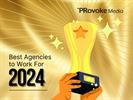Paul Holmes 02 Jan 2005 // 12:00AM GMT
It’s hard to believe it’s now more than 20 years since the release of E.T. made Reese’s Pieces and the art of product placement famous.
The scene in which the young boy Elliott followed a trail of the candy to a backyard shed and discovered the cute extra terrestrial hiding there was considered a triumph for Hershey, which makes Reese’s, particularly when it was learned that arch-rival Mars had turned down the opportunity to have Elliott follow a trail of M&Ms instead.
Since then, famous product placements have included starring roles for a DeLorean car in Back to the Future, Ray-Ban sunglasses in Risky Business, and FedEx in Cast Away. Product placement has lost its novelty, and is expanding from movies to almost every conceivable entertainment medium.
Another Tom Hanks movie, The Terminal, which was released last month to mixed reviews, featured struggling United Airlines in a featured role. Catherine Zeta-Jones plays a United flight attendant who befriends Hanks’ character. Her first words are a United boarding announcement. About 40 United employees based in Los Angeles appear as extras in the movie, which also shows United 747 planes and its Red Carpet Club.
Jerry Dow, managing director of worldwide advertising and promotion at United, which is still operating under bankruptcy protection, said the decision was an easy one. “Movies centered around airline operations don’t come along too often,” he says. The proposition was made even more attractive by the fact that United did not have to pay.
And when it was announced that the cult British sitcom The Office was being remade for American television, “some of the parties most keen to get cast weren’t writers, actors or directors,” The Financial Times recently reported. “They were computer, copier and vending machine makers wanting their products placed on U.S. network television.”
“Product placement is at a historic high,” says Tom Tardio, chief executive of Weber Shandwick’s Rogers & Cowan entertainment PR business. “Especially within TV programming, both scripted and reality TV. The practice is attractive to companies for many reasons: it achieves brand exposure at a fraction of the cost of advertising; enhances brand image through implied celebrity endorsement; and engages consumers with common experiences and interaction.”
As the use of product placement expands, there are new challenges for marketers, however. One is how to take advantage of entertainment marketing opportunities without alienating consumers. Another is how to measure the effectiveness of a marketing technique that appears to work best when done with some subtlety.
The reasons for the growth of product placement are no mystery.
According to Bob Liodice, president and CEO of the Association of National Advertisers, “I think branded entertainment in its broadest sense is one of the key opportunities for advertisers. If you look at what had been happening in the world of advertising, people have been running away from advertising. So I think you’re just going to see a proliferation of it.”
The biggest growth appears to be occurring in the television business, where marketers face some specific challenges.
“While product placement has been with us for years, it is receiving more attention than ever from marketers for several reasons,” says Ferris Thompson, who heads the new entertainment marketing practice at Edelman Public Relations Worldwide.He cites “the advent of technologies like TIVO that empower consumers to skip commercials, and the fragmentation of media making it harder than ever to reach target audiences with advertising.”
At the same time, producers have plenty of incentives to integrate branded product into scripts.
“There is more and more pressure on the production budgets, and more and more competition to launch shows,” says Thompson. “Partnering with marketers can give TV producers more budget to work with, save money and create promotional platforms that launch new shows in an extremely cluttered media landscape.”
Moreover, “product integration, when done right, can add personality, re-position brands and/or connect emotionally with consumers.”
As the use of product placement grows, products are being integrated into shows in ways that would have been unimaginable a decade ago.
Says Tardio, “Traditional product placement has opened the door to a new form of product integration known as ‘branded content,’ which is surging in popularity. In the past 12 months, we have started seeing more brands leveraging their marketing dollars for exclusive ‘branded and integrated content’ on TV that goes beyond the traditional product placement model. This new model immerses the brand within the body of the programming, which guarantees exposure.”
The more integrated approach appeals to both marketers and producers.
“Although TV producers continue to be open to traditional product placement pitches, there seems to be much more interest in creating branded and integrated content deals because of the potential dollars involved,” says Tardio. “Simply stated, content developers need the additional funding sources to launch their shows. Traditional product placement does not usually involve money changing hands to secure a placement, but works on a barter or loan system.
“So although this helps defray the cost of production, it does not necessarily bring in any hard dollars to the production, nor is a company guaranteed the placement. On the other hand, branded content deals can sometimes bring in millions of dollars for product integration in the show, such Coca-Cola, Ford and AT&T’s deals with American Idol or Chrysler Crossfire’s deal with The Apprentice.”
In response to the growing interest in branded content, R&C has built a branded content practice to help its clients to strike product integration deals. The firm is competing with talent agencies and advertising agencies, and Tardio says it differentiates itself by going beyond the integration of the product within the show and creates a fully integrated marketing campaign surrounding the placement, including media relations and promotional tie-ins that extend the brand’s involvement with the show.
Says CBS president Les Moonves, “The future of network television will increasingly depend on branded TV programming and products integrated into both reality and scripted shows.”
Last year, the NBC soap opera Passions integrated Avon’s new cosmetic line, mark, into several episodes, as part of a deal that included product advertising on the same shows. According to Deborah Fine, president of Avon Future, the company worked closely with producers to ensure the product was woven into storylines in a way that was mutually beneficial. “If it did not feel seamless and realistic it would not have worked for either of us.”
Passions appealed to Avon because of its popularity in the college market: it’s the number one soap among teenage girls and the number two soap among women 18-34.
Sheraton Kalouria, senior vice president of daytime programs at NBC Entertainment, conceded the possibility that product integration could alienate viewers. “It’s something we’re cognizant of,” he told The New York Times, “but given the good nature and sense of fun that Passions exhibits… our audience is more forgiving of this than someone else might be.” She said the company allowed head writer Jim Reilly to decide how to integrate mark into the show, and said NBC would not have forced the issue if producers were not comfortable with it.
Sears, meanwhile, has forged a partnership with ABC’s Extreme Makeover: Home Edition to showcase its line of Craftsman tools and Kenmore appliances. ”It’s a great opportunity and a perfect fit for us,” said Ted McDougal, a spokesman for the company. “It’s not forced, because Sears has always been about family and home improvement. And if it’s not authentic, then people see right through it.”
And cable offers even greater opportunities to marketers. A new USA Network original movie, The Last Ride, is partially financed by General Motors and features the new Pontiac GTO. Pontiac executives worked with Rob Cohen, director of The Fast and the Furious and of several GTO ads, on a story that features three generations of a family connected by a classic 1969 GTO and eventually rescued by a new 2004 GTO. The script attracted Dennis Hopper, who ended up promoting not only the movie but Pontiac’s involvement.
“My agent kept telling me to turn it down, but I said, ‘No, man, I really like this part,’” Hopper says. “The idea of companies like General Motors doing movies is a great idea and they’re not throwing the car in your face; it’s really a story about people.”
Not everyone agreed. Variety described The Last Ride as “really little more than a two-hour infomercial designed to sell muscle cars.” And therein lies one big challenge for marketers: achieving some measure of prominence in a production without creating the impression that the whole show is essentially an ad disguised as entertainment.
“It’s all about context, and natural, organic integration into a storyline or setting, making it easier for products like cars and beverages,” says Thompson. “The challenge is finding the right moment where the story is enhanced because of product integration, rather than creating a distraction. Everyone is looking for the ‘hero shot.’
Advertising Age editor Scott Donaton is the author of a new book called Madison & Vine: Why the Entertainment and Advertising Industries Must Converge to Survive. Obviously, he is an advocate of greater integration between Hollywood and Madison Avenue. But he is also critical of what he sees as the clumsy way many product placements are handled.
“In the convergence of Madison Avenue and Hollywood, there is a very real danger that content will be developed first and foremost with an advertiser’s needs in mind, and will only then seek an audience,” he says. “Many marketers’ motivation for gaining creative input into story lines and media content is not to have a more engaging dialogue with consumers. Instead, they are motivated by the fear that digital video recorders will make 30-second ads obsolete. How do you connect to consumers who can give you a brusque technological brush-off?
“Forgetting that the consumer comes first is a surefire model for disaster, one that leads to weak products that are unable to attract an audience, or earn its trust if they do attract it. The public loses out. The media company loses out. The advertiser loses out.”
Tom Tardio agrees. “Like many marketing tools, product placement can be viewed as intrusive when it is too abrupt and not a natural fit within the viewers taste. However, in general, brand marketers and their agencies work hard to make it organic, especially within the context of scripted television or feature films where the placements are a natural fit and essential to the set.
“Reality TV programming is a little different, wherein brands are actually written into the shows through branded content deals, and where products, if not handled properly, could be more intrusive and in-your-face. So far, within the reality TV format, viewers do not appear to resent the intrusion.” As evidence, he cites the success of Survivor and other shows with significant branded content.
Not all reality shows have learned from Survivor, however.
“The Restaurant was rendered nearly unwatchable by product placements that were aggressive, intrusive and clunky” says Donaton. “Anything but the seamless blend that is necessary to make them bearable, never mind bringing them near to the (perhaps unattainable) standard of enhancing the programming.
“The Restaurant, which chronicled the opening of an upscale New York Italian restaurant by celebrity chef Rocco DiSpirito, was not happy with showing American Express cards being used to pay for meals and Coors beer being served to customers along with other drinks or shots of Rocco pulling up to the door in his Mitsubishi (all tie-in partners). Instead, it repeatedly and blatantly crossed the line and tested the limits of viewers’ tolerance.”
“Too much of anything isn’t good, and consumers are too sophisticated to be sold,” Thompson says. “Any placements that look gratuitous, forced and/or ‘paid for’ aren’t good for the show or the brand. It erodes credibility and trust for everyone involved.”
But where marketers see the virtues of subtlety and integration, some consumer watchdogs see an insidious attempt to plant subliminal messages.
Commercial Alert, a group co-founded by Ralph Nader, submitted comments to the Federal Trade Commission asking that broadcasters be required to investigate current practices regarding what they call “embedded advertising” (a term that includes “product placement, product integration, plot placement, title placement… and other veiled commercial pitches”) and to require their disclosure—both before the show in which they appear and at the time of the product’s appearance. Currently, paid placements are identified only at the end of the show.
Such disclosure is opposed by the Freedom to Advertise Coalition, which includes the American Advertising Federation, the American Association of Advertising Agencies, and the Association of National Advertisers, among others.
The coalition argued in a letter sent to the FTC and the Federal Communications Commission that mandatory disclosure was “impractical,” “dangerous,” “extreme,” “radical,” and “borders on the ludicrous.” The group also defended product placement as “art” and suggested that disclosure would “pose a threat to artistic freedom.” And it warned that disclosure notices would make programming “virtually unwatchable.”
Gary Ruskin, executive director of Commercial Alert, responds: “[The] letter makes our point better than we ever could. Embedded advertising is now so common that it seems TV networks want to turn television into an infomercial-delivery mechanism. If a little honesty will ruin television that does not say much for television, does it? Since 1927, listeners have had the right to know who is trying to persuade or influence them. In a democracy, that is an important right.”
As for the suggestion that product placement is a matter of artistic freedom, “When a corporation pays money to have its product shown on television in an attractive setting, that’s an advertisement. They say that they stand for ‘freedom.’ But freedom would mean the freedom not to drink or show a Coke. It would mean the freedom to drink something else—some water perhaps—or nothing at all, if the actor and director so desired. Do they have this freedom?”
One problem is that some product placement is “earned” media rather than “paid” media. In other words, some product placement comes about because a writer or producer or director believes the product is right for the character. In such a circumstance, the producer might call a car company and secure the use of its product in the movie. No money changes hands, although the company provides a car, which clearly has monetary value.
In other cases, however, companies contact movie producers and offer to pay them if they use a particular car.
The distinction is the same as the difference between a paid commercial during a news broadcast and a video news release. The former is on the air because of a formal contract between the company and the broadcast channel. The latter is on the air because of the editorial judgment of an independent “gatekeeper.” The former is advertising—and should obviously be identified as such—while the latter is public relations.
Commercial Alert doesn’t recognize this distinction—its letter to the FTC calls for any situation in which goods or money were given to a production—and it’s demands for what would amount to “pop up” notices whenever a product appears would surely make TV programming both more expensive (the makers of the James Bond movies would have to buy BMWs for their eponymous hero to crash) and significantly less watchable.
“I’m not sure I understand where the terrible wrong is that needs to be righted,” said a spokesman for the Washington Legal Foundation, a public-interest law firm that filed comments with the FTC and FCC countering Commercial Alert’s stance. “Where oh where is the injury from Simon Cowell, Paula Abdul and Randy Jackson of American Idol having cups of Coca-Cola in front of them? And when Regis Philbin of Who Wants to Be a Millionaire precedes a phone call by saying, ‘Let’s go to our friends at AT&T,’ surely it is understood that Philbin is not literally friends with AT&T.”
Consumer concern is one challenge for marketers, but another—perhaps more important in the long-term—is demonstrating that product placement works.
Product placement is clearly not for every brand. “Products that benefit most from product placement are those that have a prominent and easy to recognize logo, shape or function,” says Tardio. “In other words, you know the brand when you see it used. So automotive, bottled, and packaged goods are still the best categories.”
And companies that want to get the most out of product placement shouldn’t view it as an isolated, one-off activity.
“A successful product placement varies from one brand to the next depending upon the objectives of the company,” says Tardio. “For some brands, it is enough just to have a few seconds of screen time to showcase the brand because of the nature of the product while success for others may be having a character interact with their brand to showcase how the product is used.
“But the most successful placement is one that can give life to an in-store promotion, ad campaign or media story. We work directly with the studios and networks to determine entertainment properties that would be the right placement and marketing fit with our clients’ brands. When we find the right fit, we create marketing activities surrounding the placement to extend the value of the placement as well as secure media coverage.”
The firm has created integrated marketing campaigns for Ray-Ban Sunglasses around placements in films such as Men in Black II, Charlie’s Angels II: Full Throttle, DareDevil, and Pearl Harbor. In each case, says Tardio, “the marketing campaigns started with the placement, but we extended the placement into retail promotions at Lenscrafters and Sunglass Hut stores along with direct mail pieces and point-of-sale materials, media outreach, radio and online promotions, film premiere support and advertising campaigns.”
The firm also helped place The Islands of the Bahamas on Dawson’s Creek and The Bachelor; IBM on Law & Order, CSI and Eternal Sunshine of the Spotless Mind; Ducati, which featured in a chase scene in The Matrix Reloaded; a Revo billboard, which jogged Tom Cruise’s memory in Minority Report; and Jaguar, which will be driven by Halle Berry in the forthcoming Catwoman.
Tardio suggests several methods of measuring the success of product placement: brand exposure (total viewing audience); advertising value equivalent; awareness, which can be tested through Cinema Score, a service that surveys moviegoers; or consumer response to promotional offers that are tied to the placement.
Others are developing products specifically designed to measure product placement success.
Nielsen Media Research, the leading provider of television ratings information, is launching a new service tracking product placement on the top U.S. networks. Clients will be able to view short clips of product placements online, according to either product categories or particular brands. They will also receive information about how much exposure a product received, the prominence of its placement, its integration into storylines, as well as length of time on air.
“It’s obviously a growing form of television advertising,” says a Nielsen spokesman. “We’re tracking consumer products placement and that will be made available to our marketplace. It’s also a form of competitive intelligence. We can show if it was active or passive placement, if someone was drinking a soda as opposed to seeing the soda sitting on a counter behind them.”
A new consultancy, Brand Advisors, specializes in analyzing films and television shows and measuring the impact of product placement. The firm says products in the movie Terminator 3, for example, received $28 million of combined exposure, ranging from a Toyota pick up truck that got millions of dollars of exposure to star Arnold Schwarzenegger’s sunglasses, which got a lot of screen time worth absolutely zilch because they weren’t branded in any way.
“Just as product integration has to be in the right context and used with the right application, the best use of product placement is in the context of a strategic plan,” says Thompson. “Before embarking on the challenging road leading to the intersection of Madison and Vine be sure you’re partnered with a company that can help build that plan, and has the experience and judgment to help navigate the many twists and turns of integrating your brand into entertainment.”


































.jpg)

















